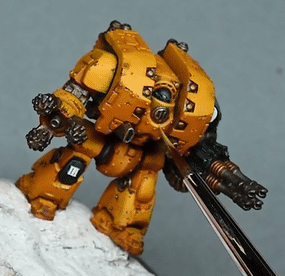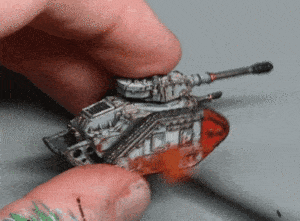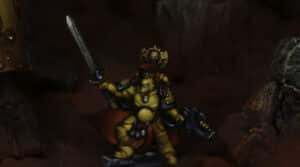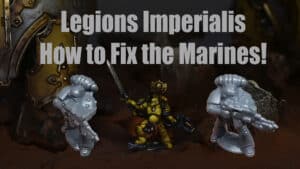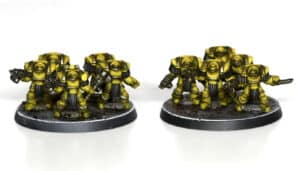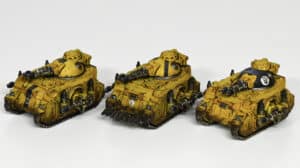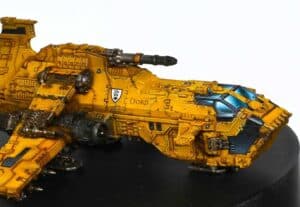A quick video review of some of the models from the new Legions Imperialis game that Games Workshop sent me as an early review copy.
In my latest video, I had the exciting opportunity to delve into the world of the new Legions Imperialis models sent to me by Games Workshop. As a longtime fan of the Space Marine and epic game system, I’ve eagerly awaited the release of a new version of Space Marine, especially since the relaunch of Adeptus Titanicus. Today, I’ll share my thoughts on these impressive models in this comprehensive Legions Imperialis Review.
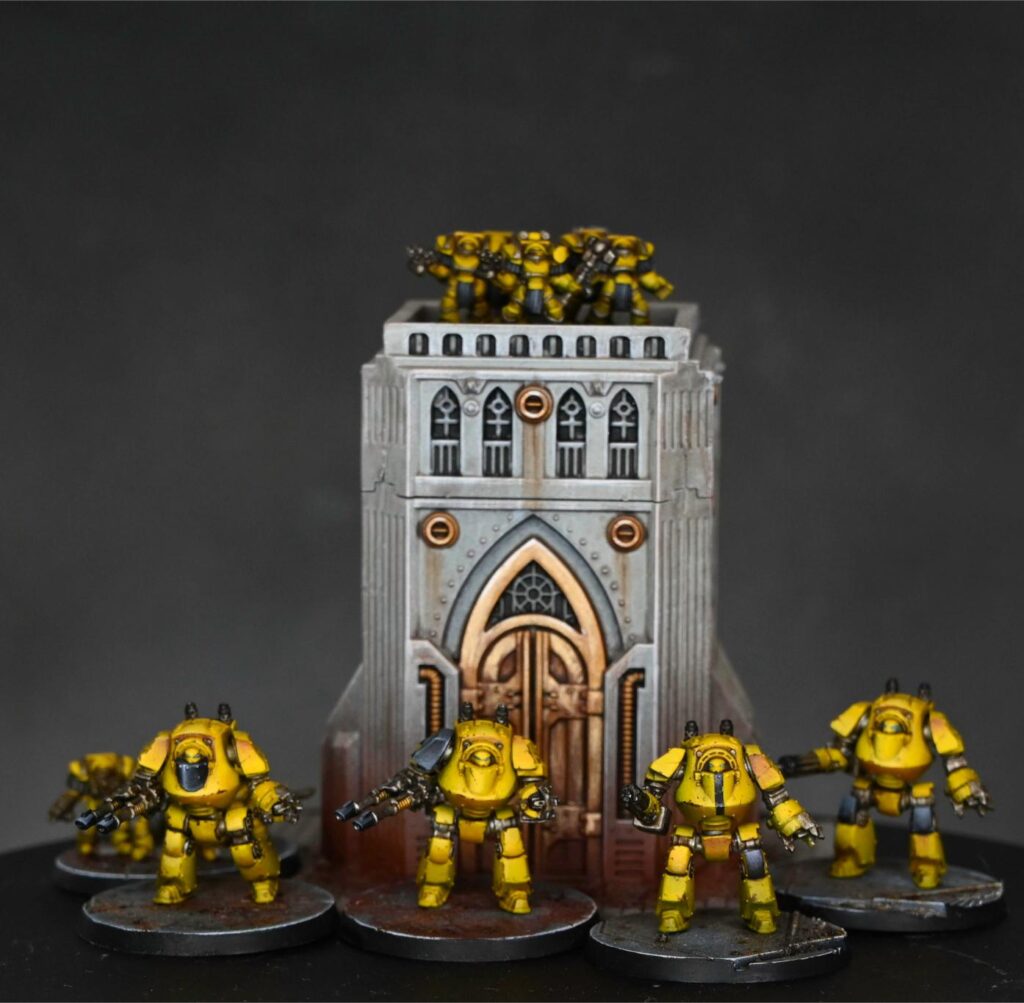
Scale and Detail
The first thing that caught my eye was the scale of these models. Larger than the old epic Space Marine ones, they sit around the 8mm mark. Games Workshop hasn’t provided an official scale, but the increase in size adds a new level of grandeur to the models. The detail on the tanks, especially the Kattos tanks and Predators, is nothing short of fantastic. The level of intricacy allows for hours of painting enjoyment, even if you opt for a quick and basic paint job.
Legions Imperialis Kit Variety and Customisation
The kit variety is impressive, featuring Kratos tanks, Contemptors, Predators, Sicararons, Terminators, Baneblade, Leman Russ Vanquisher, and more. The kits offer a high degree of customization, with posable components for certain models. While Marines come mostly as one or two pieces, larger models like dreadnoughts offer more flexibility in creating unique poses. The tank kits, with options for different weapons and turrets, are particularly noteworthy. The attention to detail on the tanks, from sponson weapons to open hatches, adds depth to the modelling experience.
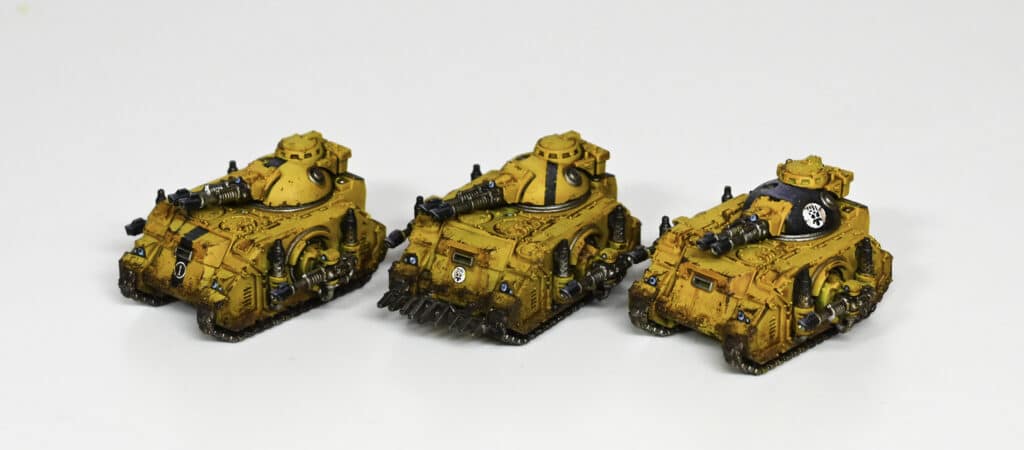
Disappointment in Marine Poses
As much as I appreciate the variety in Marine poses, there is a bit of disappointment in the distortion when viewed from the top-down perspective. The bolter-armed Legions Imperialis Marines, in particular, exhibit some stretching between the gun and the shoulder. While not a game-breaking issue, it’s a noticeable detail that could have been addressed by adjusting the poses or making the models more two-dimensional.
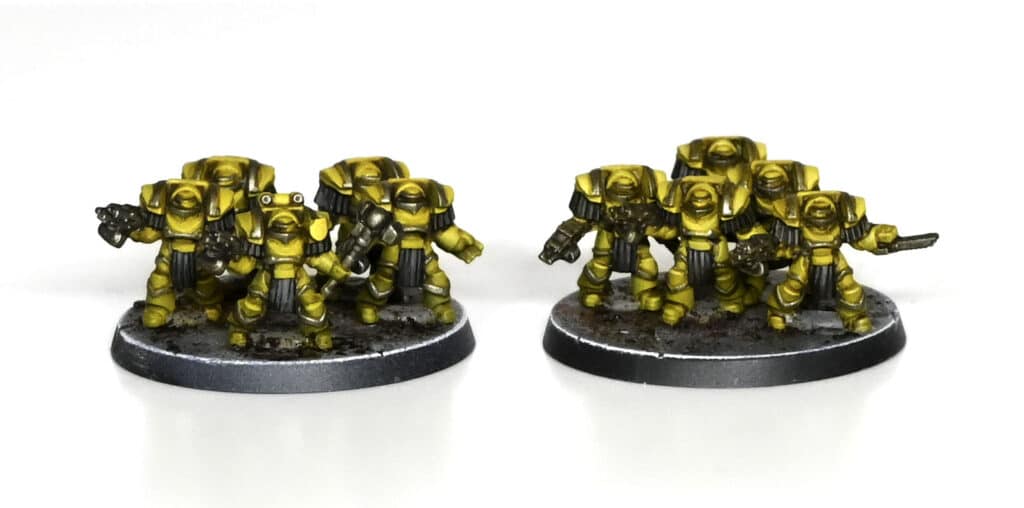
Impressive Legions Imperialis Terminators and Vehicles
The Terminators, however, stand out with their impressive detail and minimal distortion. The inclusion of a commander with a unique weapon adds variety to the unit. The vehicles, including the Baneblade and Leman Russ Vanquisher, showcase magnetised options for weapon swaps, providing additional versatility on the battlefield.
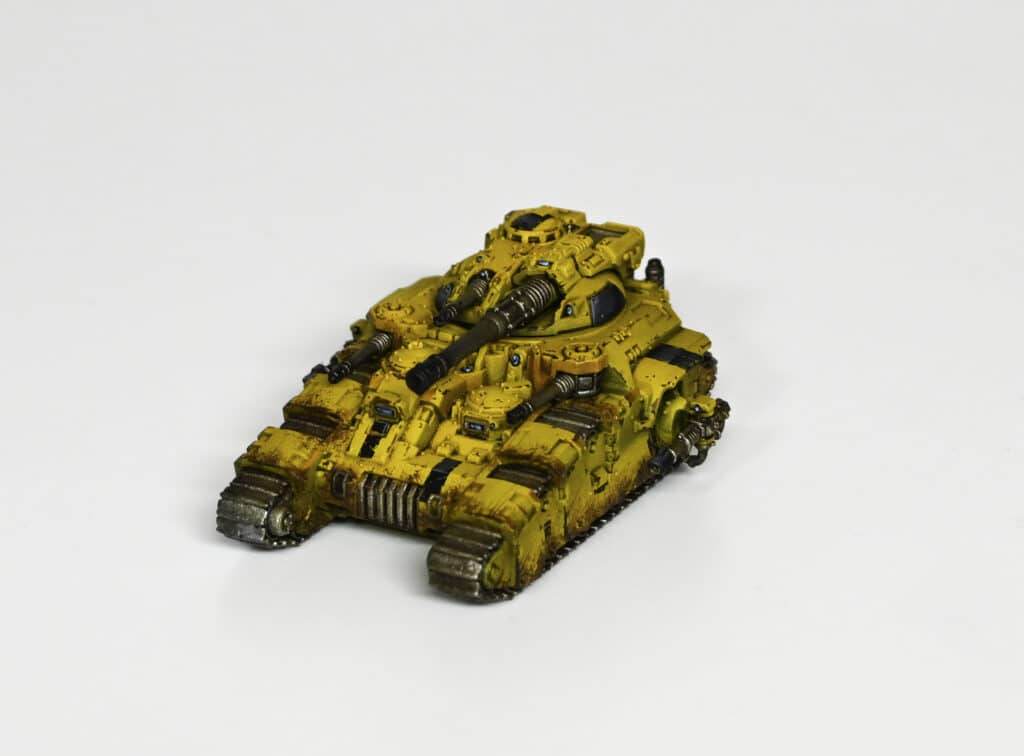
Gaming Potential and Formations
The gaming potential with Legions Imperialis is extensive. The tanks, in particular, can form a tank company, allowing for unique army compositions. The disappointment lies in the absence of rules for asymmetrical battles involving Titans only, but creative players can certainly devise their own scenarios. The formations and detachments add strategic depth to army building, preventing the creation of overly absurd armies.
In conclusion, the new Legions models offer a captivating journey into the Warhammer 40,000 universe. While there are minor disappointments, the overall quality and customisation options make these models a worthy addition to any hobbyist’s collection. Stay tuned for upcoming painting videos, where I’ll explore different Legions and showcase various painting techniques. Thank you for joining me in this exploration of the Legions, and until next time, happy hobbying!
Learn To Paint Legions Imperialis!
Follow my tutorials to paint your Legions Imperialis models like a pro.
Videos Not Showing?
To view any of my paid tutorials, you need to be a member of the website – please click below to log in or join the site.
Not sure about joining just yet? Check out my Youtube for all my free tutorials or sign up as a free “friend” member on this site and visit the Freebies video page!
If you’d prefer to support me on Patreon, please visit: https://www.patreon.com/RichardGray






